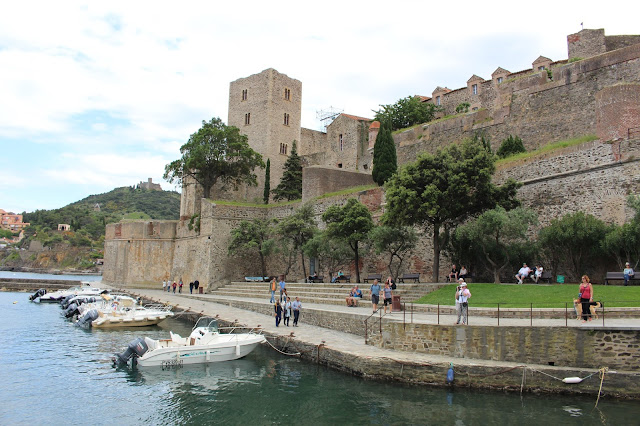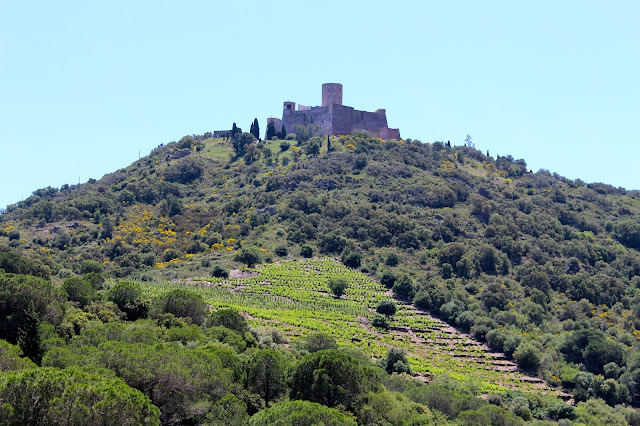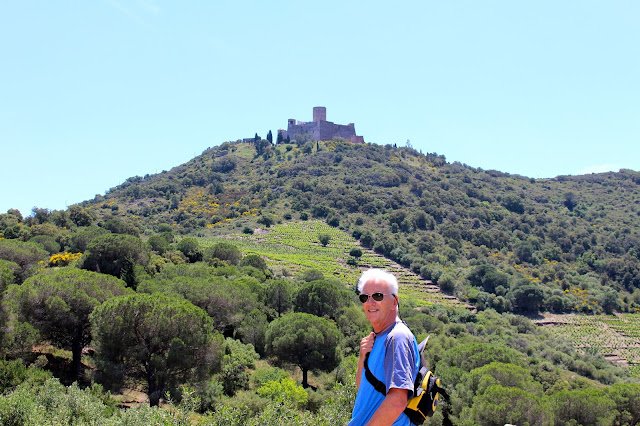France is home to some of the world's most spectacular cathedrals. With spires reaching towards the heavenlies, buttresses a-flying, magnificent sculptures and colourful stained glass windows, they leave you marvelling at how they were ever constructed. The impressive gothic Cathédrale Saint-Fulcran in Lodève has 6th century foundations but was built mainly during the 13th and 14th centuries.
Because of its strategic position on the Canal du Midi, Béziers is a popular stop for the thousands of visitors who sail, hike, or cycle along this vast waterway.
The magnificent Cathédrale St-Nazaire has been in its majestic position overlooking the Orb River since the 13th century.
To enter the stark interior, you can go through the cloister than eventually leads to the beautiful 14th century gardens.
Medieval Narbonne was a port to rival Marseille in Roman days. It was the first town outside Italy to be colonized by the Romans, but the Mediterranean, 8km away, left it high and dry. Its medieval heyday was followed by several centuries of natural disasters as well as the usual ravages of the plague. However, prosperity began to creep back to the area in the 19th century, when winemaking became an important part of the economy. That hasn't changed, as the wine industry today is what helps to keep this attractive town afloat.
Cathédrale St-Just's construction began in 1272, but it was never finished. Only the transept and a choir were completed. The choir is 40m (130ft) high, built in the bold Gothic style of northern France. At each end of the transept are 59m (194ft) towers from 1480.
In the southernmost corner of France, where the mighty Pyrénées mark the borders of Spain and Andorra, a cluster of beautiful villages nestle in the foothills waiting to be explored. The villages are distinctly Catalan, with a culture, accent and atmosphere unique to this vibrant area. Perhaps the prettiest of all the French Catalan Plus Beaux Villages, Castelnou sits away from the rest, but in no less awe-inspiring surroundings.
At the top of the village is the Chateau de Castelnou, a 10th-century fortress after which the village is named. The chateau's tumultuous history has seen it besieged on many occasions.
Rising in terraces of terracotta roof-tops with the Église Saint-Vincent sitting at the top, the village of Eus is small but perfectly formed and almost as easy to enjoy from a distance as it is getting lost in its maze of tiny alleys.
Good-on the English person who tried getting their message out there but the French pay no mind when nature calls their pooches so watch underfoot, always.
You'd almost expect Heidi to come skipping round the corner when you visit the tiny mountain village of Evol. The hamlet of rustic stone houses clustered around the pretty Église Saint-André is hidden away, deep in a mountain valley surrounded by rocks and forests. A river rushes past below and the views of the mountain peaks are never far away.
The houses in Evol are made from rough-cut shale, with slate roofs known as lauze, a speciality unique to Evol.
High up above the village sits the 13th century Chateau Vicomtal, an impressive fortress that can only be visited through arrangement with the tourist office.
The 11th century fortified town at Villefranche-de-Confluent is one of the finest examples of Vauban (fortified) design in France.
It sits at the bottom of the Confluent Valley, strong and solid, its 17th century ramparts hiding the wonderful medieval delights within. Villefrance is considered by many to be the jewel in the French Catalan crown.
At Perpignan you might think you’d crossed the border into Spain, for it was once Catalonia’s second city after Barcelona. Even earlier it was the capital of the kingdom of Majorca. But when the Roussillon—the French part of Catalonia—was finally partitioned off, Perpignan became permanently French in 1659. The Castillet is one of the chief sights of Perpignan. The machicolated and crenelated red-brick building from the 14th century is both a gateway and fortress.

It houses a museum and part of its charm derives from its bulky-looking tower, which you can climb for a good view of the town.

The vivid blue-green of the Mediterranean, the clear azure skies, and the deep red sunsets that gave the coast its vermilion name inspired painters such as Matisse and Derain. Today you can follow their trail in Collioure's winding streets, where replicas of paintings are strategically placed right where the artists painted them.
Even if you're not a fan of art, it is difficult to resist the beauty of this port village. Its sloping, narrow streets, charming semi-fortified church, antique lighthouse, pretty beaches, and generally agreeable ambience make it an inviting place to visit. It's also a major center for the production of anchovies, which you can buy directly from the fisherman and producers in the port.
We're staying at the wonderfully tranquil family-operated hotel, Casa Pairal, located in a 150-year-old Catalan house, just a short walk from the port.
Sandi's daily fix: pain au chocolat bien sûr.
Espadrilles, those flat shoes with jute rope soles and fabric tops of bright solid colours or stripes, actually originated in Spain but have become as inextricably tied to the South of France as lavender and pastis.

They are available everywhere in abundance.
Guess who's hiking to the top?

Today is the annual Anchovy Festival. Let's go check it out.
C'est un gros sandwich. (That's one, big sandwich.)
“It is the wise man who wonders at everything.”
Barcelona, Spain is only 2 hours down the road so we're off!


























































No comments:
Post a Comment